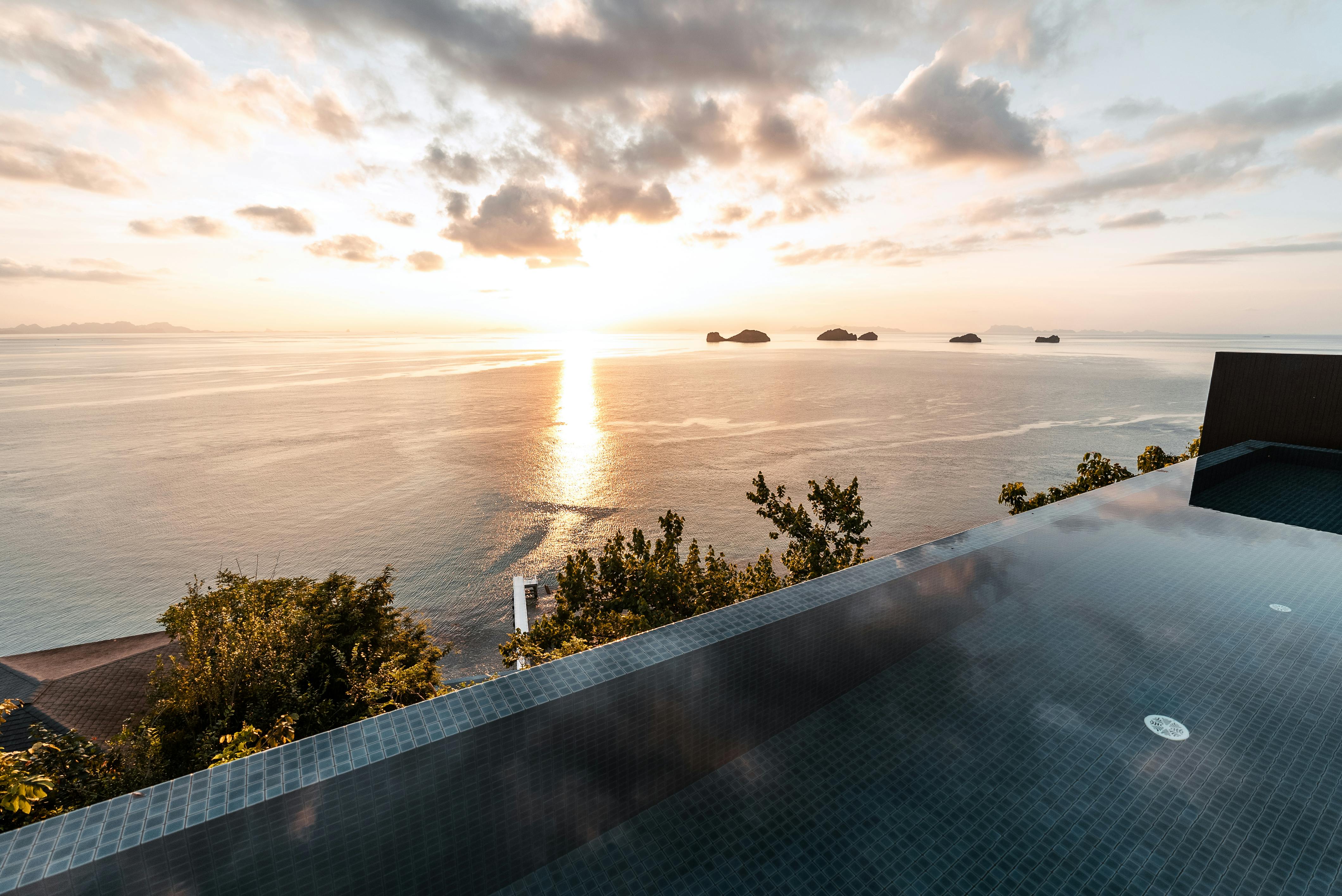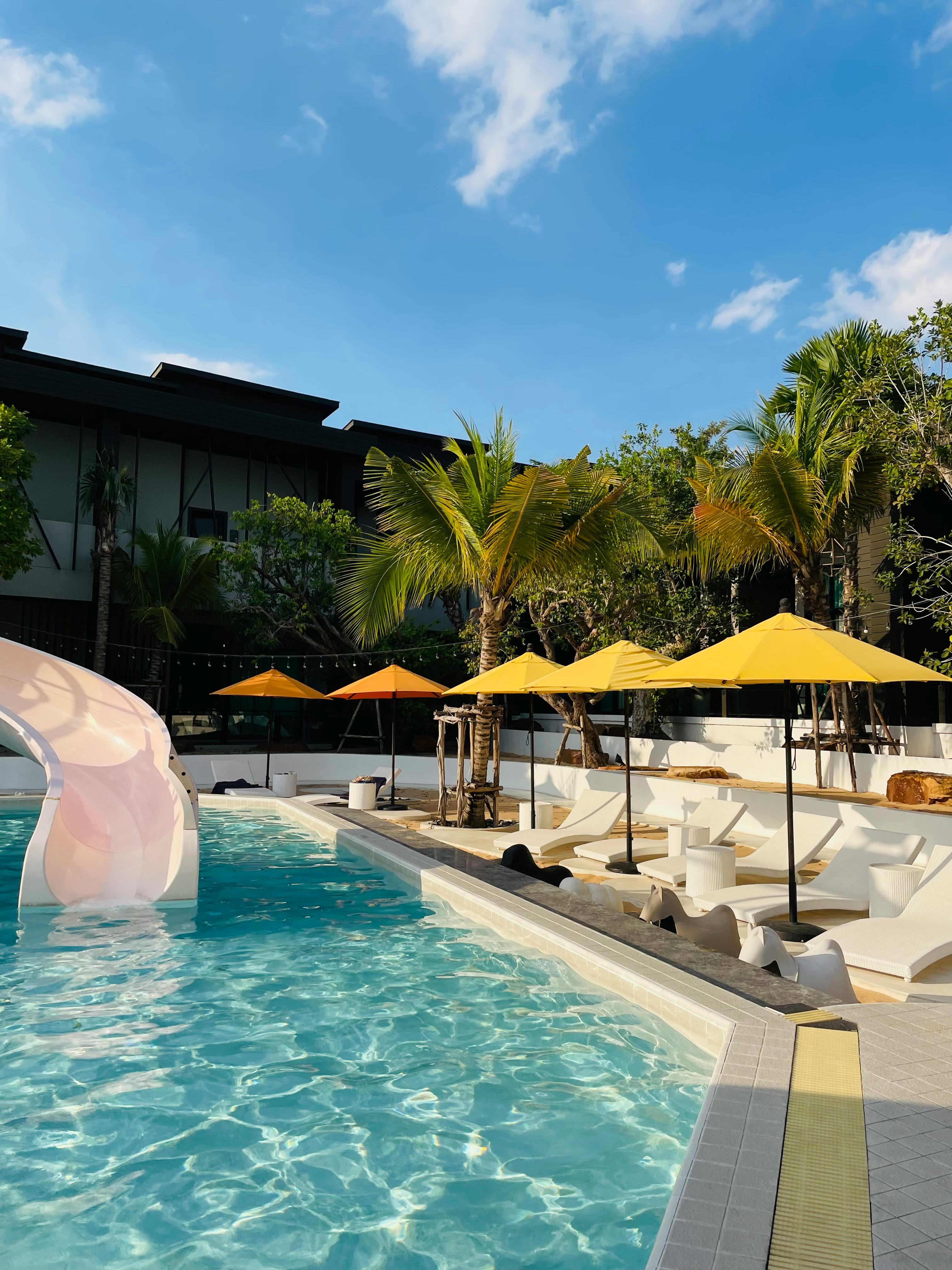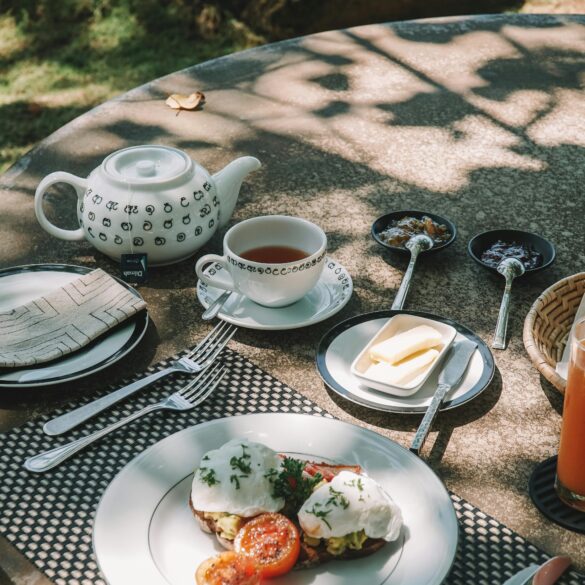Thailand Luxury Resort Strategies: Proven Guest Experience Techniques
What really strikes me—after 15 years of collaborating with resort owners, architects, and Thai hospitality teams—is how Thailand manages, year after year, to set the gold standard in luxury resort development. You’d think, after visiting dozens of “exclusive” destinations, that premium hospitality would start to look, well, pretty much the same. Yet Thailand always finds ways to surprise—with extraordinary guest experiences, inventive service rituals, and design touches you can’t easily replicate elsewhere. Why? I’ve spent late nights hashing this out with Thai GMs, walking new builds in Koh Samui, fighting jetlag in Chiang Mai, listening to guests rave about spa menus in Phuket. The answer is never simple. It’s about culture, yes, but also meticulous process, serious investment in staff, and a purposeful blend of local and global standards. There’s always some new twist coming out of Bangkok or the islands that ends up impacting luxury hospitality across Asia (and beyond).
This article dives into Thailand’s proven techniques for luxury resort development—with laser focus on what actually transforms premium guest experiences from “expected” to unforgettable. We’ll look at design philosophies, service rituals, investment frameworks, unique Thai guest preferences, and what global developers can learn from local wisdom. Whether you’re in the trenches of planning your next mega-resort, refining your group’s operational playbook, or simply dreaming of a perfect beach getaway, there’s actionable insight here for you.
Thailand’s Unique Luxury Philosophy
If I had to sum up luxury in Thailand in a phrase—it’s “deeply personal, ever flexible.” Unlike the rigid procedures I’ve seen in Western chains, Thai luxury is built on spontaneous creativity and emotional engagement. Staff go far beyond training manuals; personalized greetings, remembering guest birthdays with locally crafted gifts, proactive room upgrades after flight delays—the sort of thing that, as a guest, you don’t forget. But here’s a nuance: it isn’t flashy excess. It’s understated confidence, an effortless blend of elegance and warmth that finds roots in Thai culture. Talking to old-school Thai hoteliers, you hear them use the word ‘sanook’ (fun) just as often as ‘luxury’; the idea is that genuine happiness leads to genuine service excellence.
Thai luxury hospitality isn’t about showing off wealth—it’s about creating genuine moments of joy and calm for guests, often through small, culturally significant gestures. That mindset drives both design and operations and is why repeat guests return year after year.
Designing the Experiential Guest Journey
Whenever I’m on-site during a new resort launch, I notice something unique in Thailand: there’s a relentless obsession with the guest journey— from pre-arrival emails full of local activities, to barefoot check-ins on the beach, to late-night in-villa tea ceremonies. It’s more than a checklist; it’s a commitment. One Thai GM explained, “Luxury isn’t what you see, it’s how you feel at every moment.” What does that look like in practice? Simple things—a second cup of lemongrass tea offered without prompting, personalized guided walks in the neighboring village, a spa therapist discretely remembering your preferred oil from yesterday’s treatment. It’s operational excellence built on empathy and anticipation.
Here’s a quick snapshot of the experiential journey approach I’ve personally observed in Phuket, Samui, and urban Bangkok:
- Arrival experiences tailored to guest origin—sometimes matching even flight details and dietary needs
- Flexible in-room amenities chosen by guests before arrival
- Dedicated “experience concierge” for immersive local tours and culinary activities
- Seamless digital integration—from app-based bookings to real-time translation and guest messaging
- Nightly turndown rituals with small surprises (handwritten notes, mini sculptures, custom bedtime snacks)
These aren’t just trends—they’re proven techniques that consistently generate sky-high guest satisfaction scores according to recent industry benchmarking reports1. Thailand’s approach isn’t accidental, it’s strategically curated over decades, shaped by both local wisdom and global best practice exchanges between regional hospitality networks.
Did You Know?
Thailand welcomed over 12 million premium international guests in 2023, with the highest repeat visitor rate in Southeast Asia. According to the Thai Ministry of Tourism, 61% of luxury resort guests return within three years—a figure that far exceeds regional rivals2.
Staff Culture and Service Rituals That Redefine ‘Premium’
Let me step back for a moment and say: there’s a common mistake I’ve seen Western managers make when entering the Thai market. They underestimate the power of staff culture, assuming ‘premium’ is all about marble lobbies and Instagrammable pools. Actually, it’s the service rituals—the everyday behaviors and behind-the-scenes teamwork—that create genuine guest empathy and satisfaction. The best Thai resorts invest more in staff development and empowerment than any comparable luxury property I’ve seen in Indonesia, the Maldives, or Singapore. Why? Thai service culture leans on ancient principles—respect, mindfulness, family values—and combines them with modern coaching for emotional intelligence.
Here’s the thing—staff turnover rates in Thai luxury resorts are among the lowest in Asia3. It’s not just compensation; it’s jobs with pride, personal growth, lifelong skill development, and a kind of professional kinship you can feel when walking the property. I remember, during a site audit in Koh Lanta, watching a head housekeeper guide junior staff through an elaborate towel art routine before room cleaning. “It’s not for a photo,” she whispered, “It’s for the guest to feel taken care of.” Significant, right?
Success starts not with architecture or imported products, but with continuous staff training, creative empowerment, and an ingrained sense of hospitality that’s woven into every operational moment. This is where Thai luxury resorts build their reputation—and resilience.
Service Rituals: What Sets Thai Luxury Apart?
These rituals are more than symbolic gestures—they’re meticulous processes. You see it in the daily “wai” (greeting), the whisper-quiet poolside towel placements, and individualized room aromatics. A colleague recently pointed out that even the smallest resort in Chiang Rai offers complex tea ceremonies and daily staff briefings with personal guest stories included. The rationale? It keeps everyone, from the front desk to beach attendants, aligned with the guest’s emotional journey. A recent survey by the Hotel Investment Conference Asia Pacific found that Thai resorts outperform peers in personalized guest recognition metrics4.
- Daily meditation rituals for teams, reducing stress and increasing guest focus
- Individual empowerment—staff authorized for flexible decision-making to solve guest challenges instantly
- Rotational guest feedback sessions in multiple languages
- Inter-departmental “experience exchanges” to foster empathy and innovation
“In Thailand, staff don’t just serve—you feel cared for, remembered, and respected. That’s what global luxury wants to copy, but rarely achieves.”
Honestly, I reckon this staff-centric approach is the biggest reason for Thailand’s market resilience in periods of global travel fluctuation. Staff become brand ambassadors, guest relationships deepen, and brand loyalty follows.
Investment Models & Infrastructure Strategies
Now, here’s where I get passionate. Having worked with international development teams entering the Thai market, I’ve seen some absolutely game-changing approaches to investment and infrastructure. It’s fundamentally different from the “build-big, hope-for-best” model I sometimes see in Western resort hubs. Thai luxury development is adaptive, modular, and hyper-local. It leverages regional construction partnerships, integrates with local government initiatives, and—crucially—focuses on sustainable environmental impact at every phase5.
A good example? Property diversification via multi-phase resort expansion, starting with core premium experiences before scaling up with secondary amenities based on guest feedback and market fluctuations. Developers increasingly use hybrid funding models: local bank financing, joint ventures with regional hospitality brands, and global impact investment funds.
Sustainable ROI in Thai resort development follows a “test & iterate” blueprint—never a one-off spend. Long-term partnerships with local artisans, eco-focused engineers, and tourism officials create lasting value and ongoing flexibility.
| Resort Model | Initial Investment (USD) | Time to ROI | Staff/Guest Ratio |
|---|---|---|---|
| Boutique Villa | $4-7 million | 3-5 years | 1:2 |
| Integrated Spa Resort | $12-22 million | 4-7 years | 1:1.7 |
| Urban Luxury Tower | $25-40 million | 6-9 years | 1:2.5 |
Numbers above are based on interviews with Thai property owners and benchmarking against regional resort investment reports6.

Cultural Authenticity & Innovation in Thai Resort Dev
Back when I first started consulting on Thai luxury projects, I underestimated how deep cultural authenticity runs—until I sat through a multi-hour workshop with village elders designing guest activities around the Songkran festival. What looked simple on paper—water rituals, temple tours, street food tastings—became a sophisticated choreography of guest delight and local respect. This, by and large, sets Thailand apart. Cultural authenticity isn’t added post-hoc; it shapes architecture, service rituals, even staff uniforms. Guests don’t just see Thailand—they experience it through daily life moments, curated for both discovery and comfort.
Questions I hear all the time from developers: “How do we ‘do’ Thai authenticity without falling into cliché?” I can’t claim all the answers, but what’s clear is the way successful resorts approach this dilemma:
- Integrate local community partnerships into guest offerings (handicraft workshops, food tours, eco-treks).
- Architectural design follows natural landscape contours—minimal disruption, maximum harmony.
- Staff training includes local dialects, history, and folklore, so guest interactions become educational and immersive.
- Menus lean on local sourcing, both for taste and for storytelling (“this mango was grown 2km away” is a nightly refrain).
Here’s the thing though: it requires continuous innovation. Resorts that stagnate on tradition, without updating processes and tech, lose relevance quickly. New builds routinely integrate smart room tech, digital guest mapping, and online feedback forums tailored for Asian and European guests.
“Authenticity isn’t static—Thai luxury means honoring the past and reinventing the future with every new guest.”
Soneva Kiri on Koh Kood marries traditional Thai design (stilted bamboo villas, open-air bathhouses) with hyper-modern sustainability—solar panels, zero-waste kitchens, and AI-powered guest personalization. They achieved 112% occupancy year-round in 2023 and won Asia’s Best Green Resort Award7.
How Thai Resorts Use Cultural Storytelling
At Six Senses Yao Noi, one of my personal favorite stays, every evening features a different cultural event—batik painting, shadow puppet shows, local language lessons. It’s a living curriculum disguised as luxury entertainment, and guests not only appreciate it—they post about it obsessively, beating even paid influencer campaigns for authentic reach.
Even small touches make major impact: breakfast menus feature regional teas, staff greet guests in their home dialects (where possible), and in-room libraries include works by Thai authors. The goal? Build emotional connection, increase the likelihood of repeat visits, and deepen traveler respect for the destination.
| Authenticity Technique | Guest Impact | Repeat Visit Rate | Social Media Mention Uplift |
|---|---|---|---|
| Local Artisan Workshops | Empowerment, Memorable Takeaways | +23% | +34% |
| Cultural Evening Rituals | Joy, Shared Memories | +29% | +20% |
| Local-Sourcing Menus | Wellness, Storytelling | +17% | +15% |
The data above is based on a 2023 academic study of Southeast Asian luxury resort guest behavior8.
Country Fact Box: Hospitality in Thailand
Thailand’s Hospitality Superpower:
International benchmarking studies show Thailand ranks #1 in Asia for social media-based guest engagement metrics, and #2 globally (behind Italy) for guest satisfaction scores in luxury accommodations9. In 2024, the average Net Promoter Score (NPS) for Thai luxury resorts hit 74, compared to a global average of 59.
Ever notice how most global “luxury resort trends” start—quietly—in Thailand? From wellness-centric room amenities to pop-up local markets inside five-star properties, what’s new in Bangkok or Koh Samui often becomes a global norm within 18-24 months. I go back and forth on what really started the digital guest revolution. But if you ask local managers, they’ll tell you: relentless curiosity and willingness to adapt from guest feedback.
Your Next Luxury Step: Applying Thai Techniques
Let me think about this for a second—if you’re reading this deep into the article, you probably feel a mix of inspiration, skepticism, and practical curiosity. You’re not alone. Whether you’re a developer, operator, or future guest, the real value lies in adapting, not just copying, Thailand’s proven luxury strategies. What I’ve consistently found is that the most successful international resorts integrate Thai-inspired staff empowerment, modular investment blueprints, and immersive guest journey mapping. But, and this is crucial—they tailor it to local context, continuously iterate, and always leave space for spontaneous magic.
Review your current guest journey map. Where could authentic cultural touches, staff empowerment, or modular investment amplify premium guest experiences? Take one Thai-inspired idea and trial it for 90 days, tracking measurable impact.
- Empower your team with localized training and guest storytelling skills
- Develop community partnerships for authentic guest activities
- Prototype a flexible, guest-responsive investment model
- Integrate wellness and sustainability metrics into daily operations
- Track guest feedback and share learnings across teams monthly
Pause here and think about your next step: The luxury resort industry is shifting fast, but Thailand’s tangible results—repeat visitor rates, global influencer reach, sustainability milestones—prove that empathetic innovation and deep local pride are unstoppable assets. Try the Thai way, not as a recipe, but as an invitation to co-create the next wave of premium hospitality.
Conclusion: Thailand’s Lasting Impact on Luxury Hospitality
On second thought, maybe what I should have mentioned first is this: Thailand’s approach is as much about relentless learning as it is about tradition. Every world-class luxury resort I’ve studied, visited, or helped develop in Thailand prioritizes thoughtful adaptation—not just rote repetition. The result? Guest experiences that feel fresh, meaningful, and often magical. As the hospitality industry faces new waves of global uncertainty, rising guest expectations, and fast-paced tech, Thai strategies for staff culture, flexible investment, and authentic guest journeys are more valuable than ever. Looking ahead, the resorts that win will be those brave enough to learn, listen, and innovate across cultures—not those who chase hollow trends.
Honestly, I reckon anyone who wants to build or run a truly premium resort—anywhere in the world—should start by listening to the Thai hospitality story. Then ask: “How can these proven techniques spark my next breakthrough?”
References



